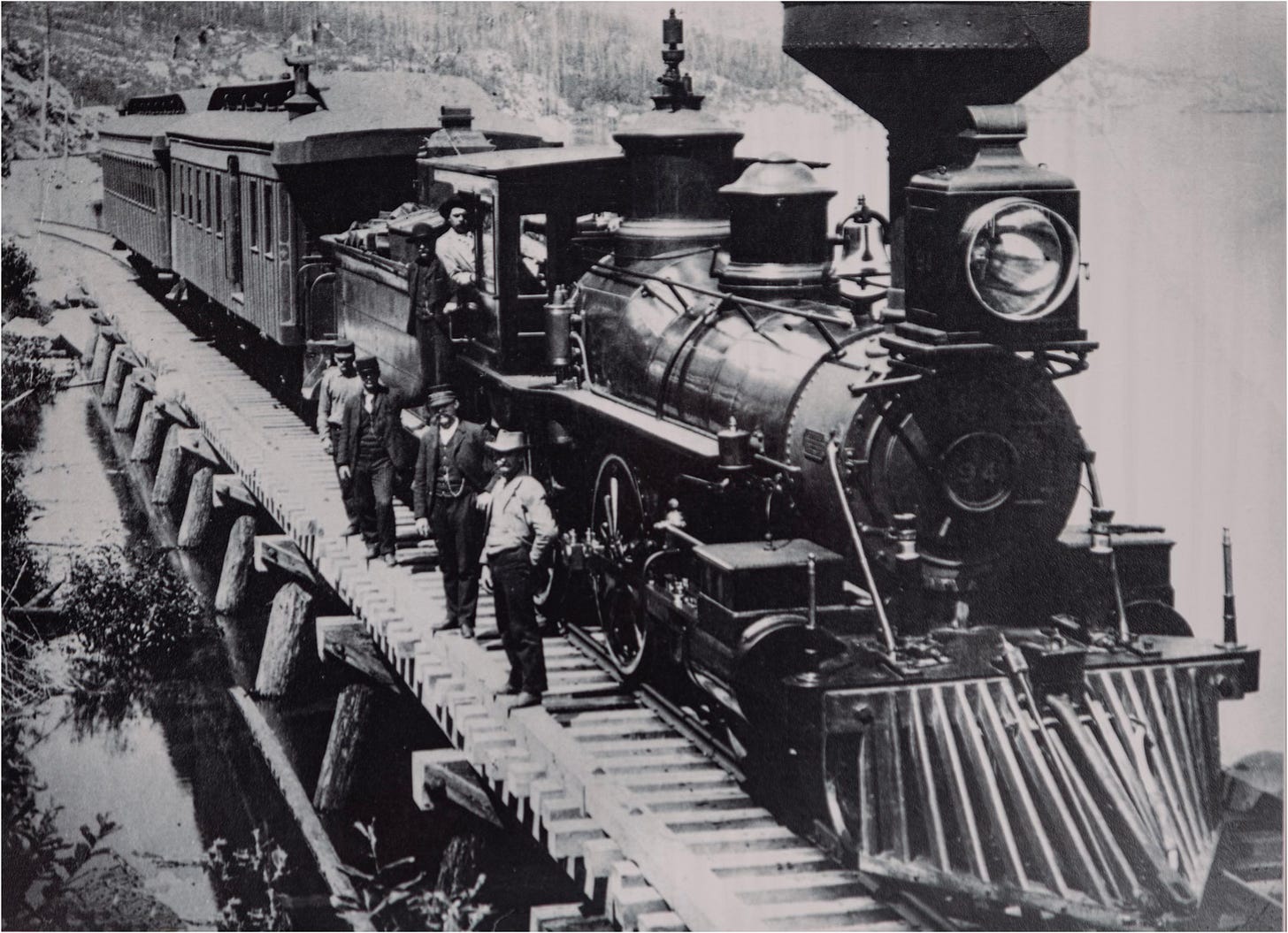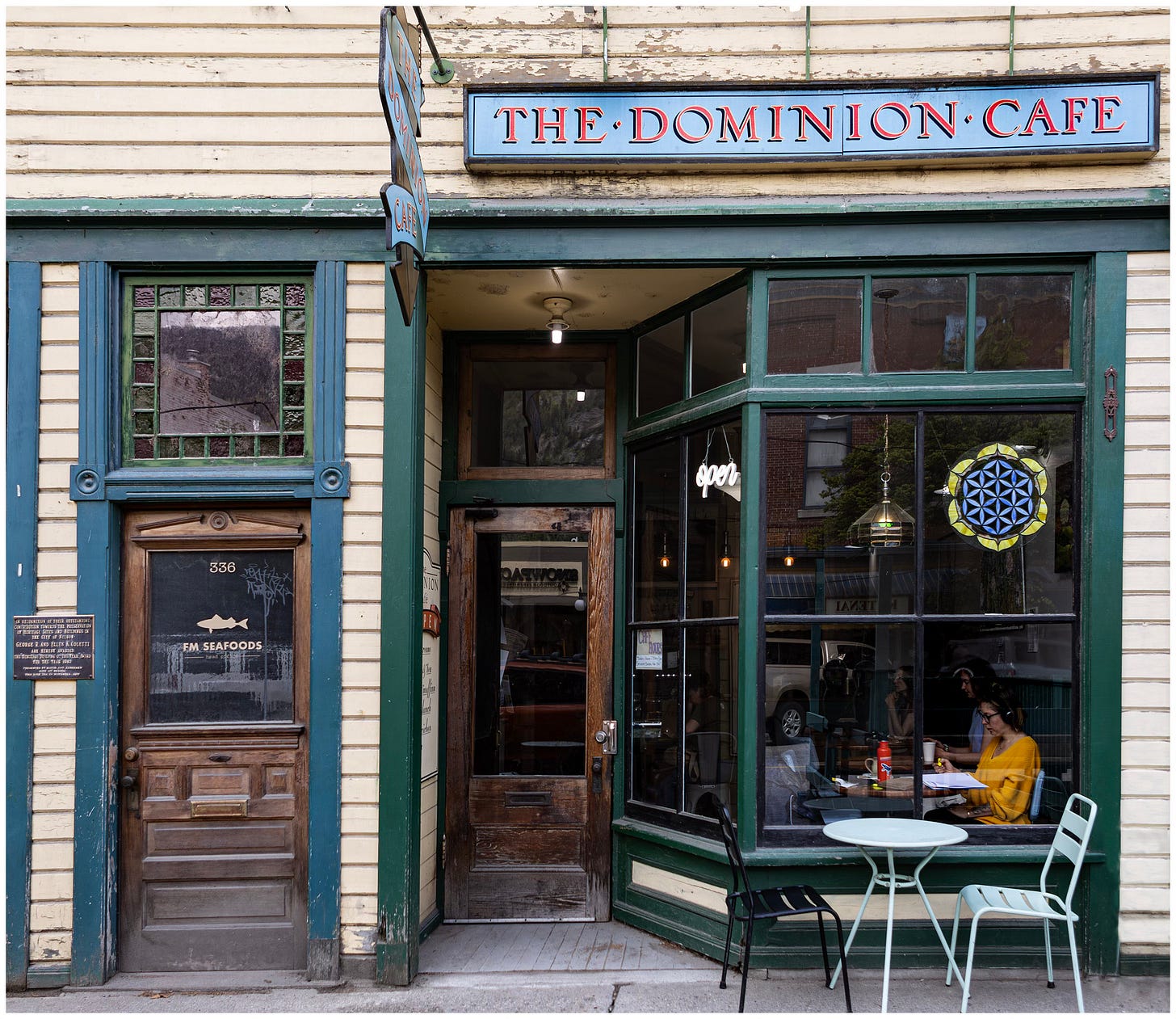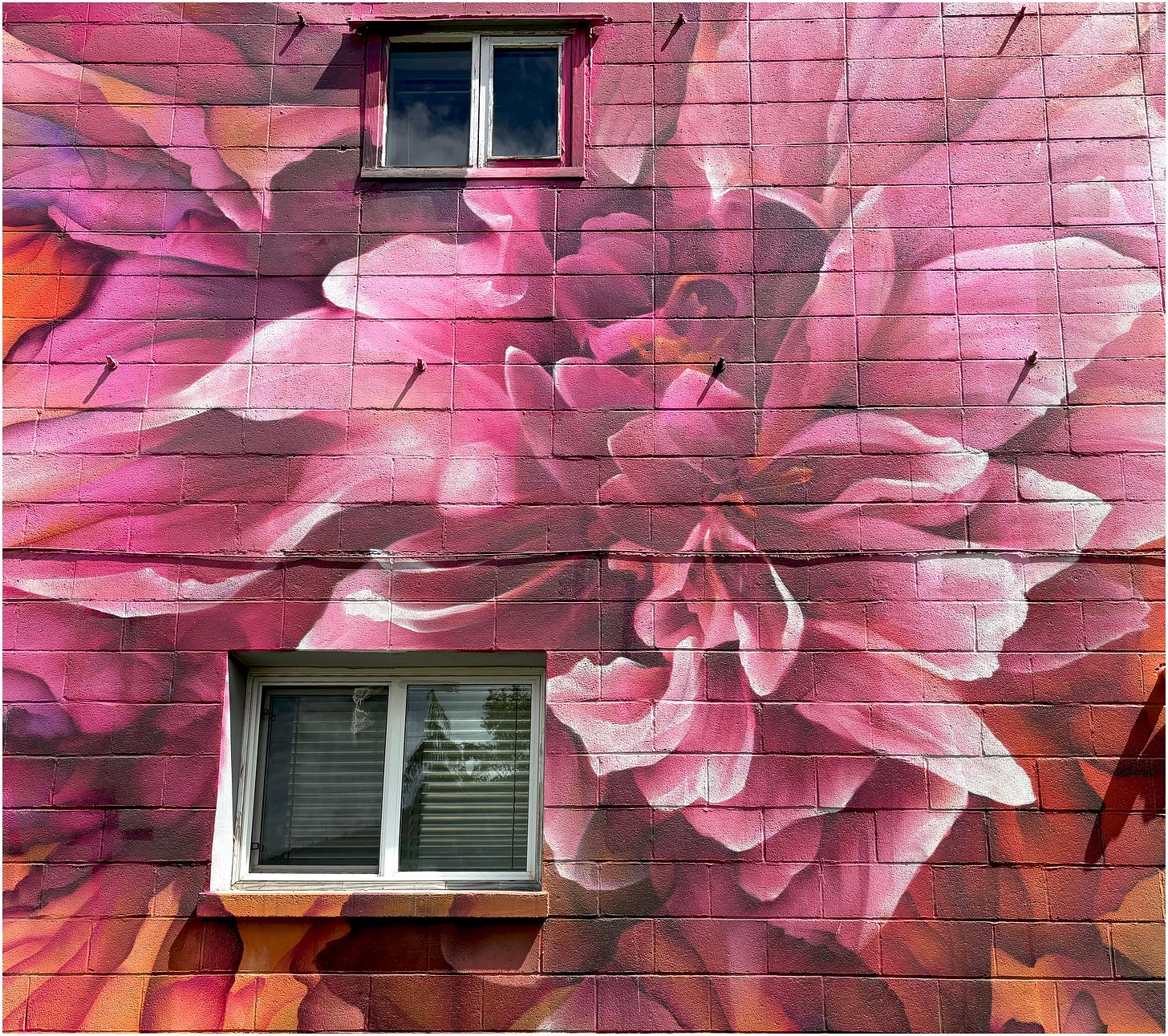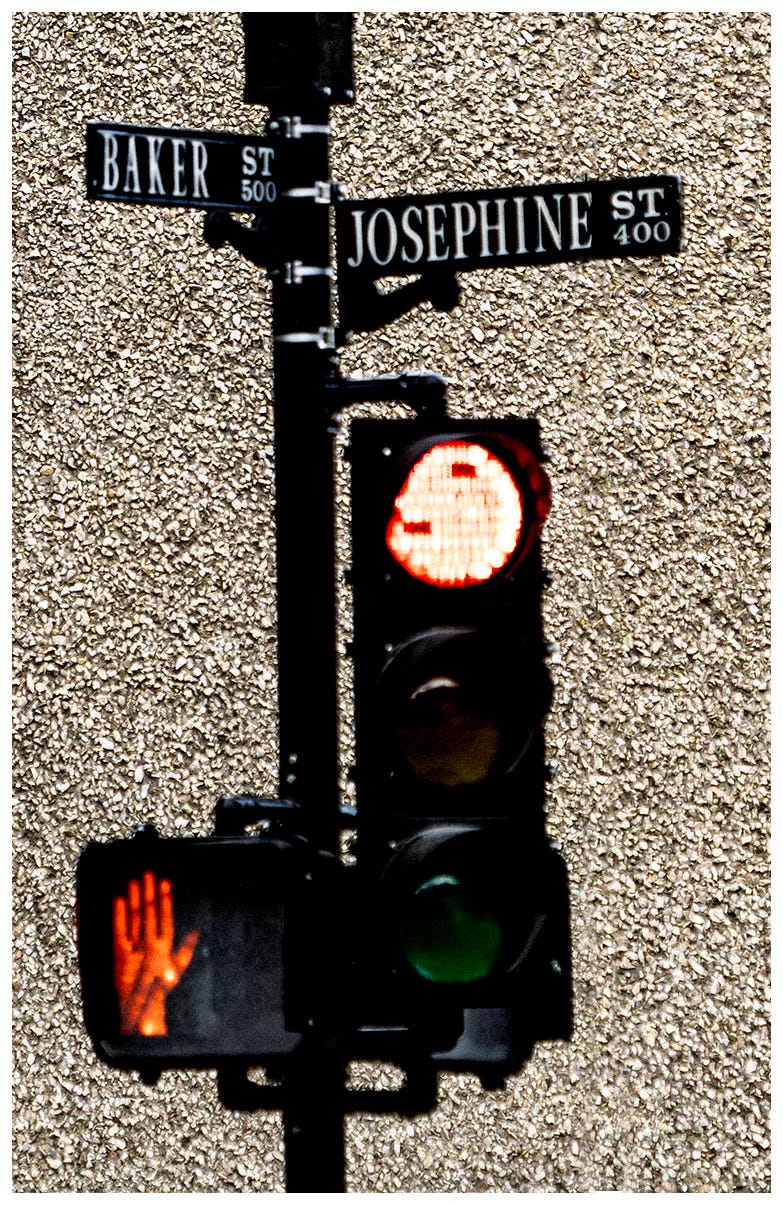Nelson, the Youth Mecca/Nelson, la Mecca dei giovani
From silver-rush boomtown to millennial magnet, Nelson keeps reinventing itself without losing its arts-soaked soul/Da fiorente città della corsa all’argento a calamita per i millennial (IT segue EN)

It all began in 1886, when two disheartened prospectors sat atop Toad Mountain lamenting their bad luck—only to realize they were literally perched on a rich silver vein that would later become the Silver King Mine. That discovery launched the fortunes of the town of Nelson. Within a decade, the fledgling settlement on the West Arm of Kootenay Lake—hemmed in by the Selkirk Mountains—boasted a smelter, a Canadian Pacific spur line, and electric streetcars that climbed what was once dubbed “the steepest track in the Empire.”
They came without plan, program or intention, and were instantly caught in the snare of its beauty — Journals of William Dawson, 1918 (excerpts published in “Nelson, British Columbia,” by Anne DeGrace & Steve Thornton, Ceriph Press, Nelson, BC)

Why young people are moving in
Nelson’s mining heyday faded, and by the 1970s the town was known as a “hippie hold-out,” a refuge for draft-dodgers and back-to-the-landers. Today, it has re-emerged as a youth mecca—a magnet for millennials who want powder in winter, single-track and lake life in summer, plus fibre-optic internet year-round. Tele-commuters and young families are swapping Vancouver or Calgary real-estate prices (660 km and 610 km away, respectively) for century homes within stroller distance of Mountain Montessori Early Learning Centre. A co-working hub, high-speed fibre (installed 2014), and daily flights to Vancouver from nearby Castlegar Airport have made “live where you play” plausible.
Markets, makers and music
“I love the heritage buildings that dot the town [there are more than 30 listed on our self-guided tour, most saved from 1970s demolition by an early preservation movement], the street markets, and the arts,” says Lauren, who relocated from Victoria a decade ago. “I came for the Shambhala Electronic Music Festival in nearby Salmo seven years ago, liked what I saw, and never left,” echoes Jack, an Australian serving craft draughts and creative cocktails on the patio at Beauties, where they spin “rock ’n’ roll from 11 a.m. till late.” Music truly threads through the calendar: tiny venues such as The Royal and Bloom Nightclub book acts en route from Vancouver to Calgary, while jazz and bluegrass jams erupt in back gardens.
Among all these people there was a tacit revolt against the artificial bondages of civilization — Journals of William Dawson, 1918
Backdrops to daily life
Strolling Baker, Ward, and Victoria Streets, we found that behind ornate brick Victorian façades and bygone department stores now thrive independent cafés, solar-powered tech start-ups, organic-cotton boutiques, artisan chocolatiers, and the now-omnipresent (legal) cannabis parlours. For the record, the Nelson Star’s “Hugs & Slugs” column recently aimed a “Slug” at Mayor Morrison “for shooting down the application for a temporary [outdoor] cannabis lounge.”
It was a Lotus-land where all things were the same and it was always afternoon — Journals of William Dawson, 1918

The artistic element
“International students come for lower tuition and end up feeding the local scene,” notes Alyssa Fox, who works at Buddy’s Place. No doubt the presence of Selkirk College’s School of the Arts, established 1989, has contributed to the town’s creative vibe, supplying a steady stream of painters, potters, and sound engineers. And if lofts above old bookstores are being converted into apartments, while community solar gardens feed surplus power back into the grid, even the 1902 CP rail station, once slated for demolition, now has been reconverted to house Nelson’s Chamber of Commerce and Visitor Centre, a bike-rental shop and a zero-waste grocer-coffee bar. “We collect produce coming from local farmers and use it to prepare all our dishes,” tells us Maya, helper at The Block at Railtown. Maya, who was born and raised here, says that what makes Nelson special is, most of all, “its sense of community and its very friendly atmosphere.”
The spell of the place fell upon them — Journals of William Dawson, 1918
A glance ahead
Nelson’s challenges mirror its allure. “Rents keep climbing as the town grows more popular,” Lauren notes, and wildfire-smoke seasons have lengthened. Yet the activism that saved The Capitol Theatre now powers climate-adaptation workshops and affordable-housing trusts. If history is any guide, this town of about 10,600 will reinvent itself again—doubling down on its knack for honouring the past while welcoming new voices to paint, program, play, and plant the next chapter in this improbably vibrant mountain haven.

Nelson, la Mecca dei giovani
Tutto ebbe inizio nel 1886, quando due cercatori d’oro scoraggiati, pronti a gettare la spugna dopo l’ennesima giornata a mani vuote, decisero di tentare ancora una volta nei pressi della cima del monte Toad. Lì scoprirono la vena d’argento che avrebbe dato vita alla leggendaria miniera Silver King e fatto la fortuna di Nelson, minuscolo insediamento affacciato sul braccio occidentale del lago Kootenay e stretto fra le selvagge cime delle Selkirk. Nel giro di un decennio il villaggio si trasformò in cittadina dinamica, con fonderia, diramazione della Canadian Pacific Railway e persino tram elettrici che arrancavano su quella che venne orgogliosamente definita “la salita più ripida dell’Impero”.
“Arrivarono senza un piano, un programma o un intento, e furono subito catturati dal fascino di quella bellezza.”— Diari di William Dawson, 1918 (estratti pubblicati in “Nelson, British Columbia,” di Anne DeGrace & Steve Thornton, Ceriph Press, Nelson, BC)

Dopo il tramonto dell’epoca d’oro delle miniere, Nelson attraversò un lungo periodo di stagnazione. Negli anni ’70 divenne un’enclave alternativa per renitenti alla leva e nostalgici del ritorno alla terra. Oggi è tornata in auge, questa volta come mecca di una nuova generazione di giovani adulti votati all’outdoor - in inverno è il paradiso della neve fresca, in estate offre sentieri per mountain bike e giornate sul lago – ma anche di lavoratori da remoto e giovani famiglie in fuga dai costi proibitivi di Vancouver e Calgary (rispettivamente a 660 e 610 km). Punteggiata di edifici storici – se ne contano una trentina, salvati dalla demolizione negli anni ’70 – ma innervata da una moderna infrastruttura digitale, e con voli giornalieri per Vancouver dall’aeroporto di Castlegar, Nelson rende il “live where you play” uno stile di vita reale.
“Era una terra del Loto, dove tutto rimaneva com’era e dove era sempre pomeriggio.” — Diari di William Dawson, 1918

“Adoro i mercatini di strada e la scena artistica locale”, racconta Lauren, trasferitasi qui da Victoria una decina d’anni fa, dopo esser venuta qui per una breve vacanza. Storia simile per Jack, australiano con il sorriso da eterno viaggiatore, che lavora da Beauties, un locale con patio all’aperto dove il rock‑n‑roll riecheggia dalle 11 del mattino fino a tarda notte: “Sette anni fa sono venuto per lo Shambhala, il festival di musica elettronica che si tiene a Salmo — due vallate più in là — mi è piaciuto tutto e non me ne sono più andato”. La musica, a Nelson, non è solo colonna sonora: è una presenza costante, che si intreccia con le stagioni e con le strade. Piccoli locali come il The Royal e il Bloom Nightclub ospitano artisti di passaggio tra Vancouver e Calgary, mentre nei giardini privati sbocciano con naturalezza jam session di jazz e bluegrass.

Passeggiando lungo Baker Street e Ward Street, si scopre che dietro le facciate vittoriane in mattoni decorati e i vecchi grandi magazzini ora si nascondono start-up tecnologiche alimentate a energia solare, boutique di cotone biologico, cioccolaterie artigianali, gli onnipresenti salottini della cannabis e bar che usano solo prodotti locali: «Acquistiamo dagli agricoltori della zona quello che serve per preparare i nostri piatti» dice Maya, commessa da The Block at Railtown, un emporio a rifiuti zero con annessa caffetteria, ospitato nell’antica stazione ferroviaria della Canadian Pacific (1902), scampata alla demolizione e riconvertita in centro visitatori. A completare il quadro, una scena artistica alimentata da un flusso continuo di pittori, ceramisti e studenti della School of the Arts del Selkirk College, fondata nel 1989. «Gli studenti internazionali arrivano attratti dalle tasse universitarie più basse e finiscono per diventare parte del panorama creativo locale», osserva Alyssa Fox, che lavora da Buddy’s Place, negozio di forniture artigianali.
Furono catturati dal fascino del luogo — Diari di William Dawson, 1918

Ma Nelson rischia di divenire vittima del suo stesso successo. «Gli affitti stanno salendo, man mano che la città diventa più gettonata», ci dice Lauren. Per di più la stagione degli incendi si allunga ogni anno di più. Ma lo spirito civico locale si è già messo in moto, da un lato promuovendo fondi per l’edilizia accessibile e dall’altro incentivando laboratori per l’adattamento climatico. La storia può ancora ripetersi in questa cittadina di circa 10.600 abitanti che si è già reinventata più volte, puntando su ciò che l’ha sempre resa unica: usare il passato per dare spazio a nuove voci e idee, pronta a immaginare il prossimo capitolo di un’esistenza iniziata per la testardaggine di due sognatori con la pala in spalla.






